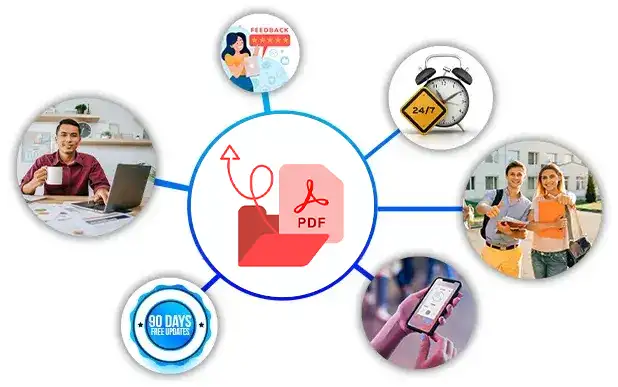- Home /
- Blockchain /
- CBDH /
- CBDH PDF
Blockchain CBDH PDF Exam Questions:
How to Get Success in Blockchain CBDH Exam:
- Avoid deceptive CBDH PDF Exam Questions.
- Focus on CBDH Questions (PDF) based on the latest exam syllabus.
- Make notes of Blockchain CBDH PDF for better learning.
- Prepare from our latest Blockchain CBDH PDF file and get success in first attempt.


Prepare Blockchain CBDH Exam Within Short Time
Your knowledge and abilities are validated by passing the Blockchain CBDH exam. Our PDF questions and answers will help you prepare for the CBDH exam in a short time because it includes questions similar to the real Blockchain exam questions. After downloading the CBDH Blockchain PDF exam questions, relevant to the actual exam, you can take a print of all questions and prepare them anytime, anywhere.
Realistic Scenario Based Blockchain CBDH PDF Exam Questions:
Everyone wants to become certified Certified Blockchain Developer - Hyperledger Fabric and improve his/her resume. You should practice with real CBDH questions. Students can benefit from the CBDH exam questions which are available in PDF format. The CBDH exam questions and answers are designed to match the criteria of the actual exam. If you use scenario-based Blockchain CBDH questions you will have an extra potential to clear the exam on the first attempt.
Level DB is the default database for Hyperledger Fabric and is particularly appropriate when ledger states comprise what type of data?
See the explanation below.
Simple key-value pairs - LevelDB is the default and is particularly appropriate when ledger states are simple key-value pairs. A LevelDB database is closely co-located with a network node -- it is embedded within the same operating system process. CouchDB is a particularly appropriate choice when ledger states are structured as JSON documents because CouchDB supports the rich queries and update of richer data types often found in business transactions. Implementation-wise, CouchDB runs in a separate operating system process, but there is still a 1:1 relation between a network node and a CouchDB instance. All of this is invisible to chaincode.
https://hyperledger-fabric.readthedocs.io/en/release-1.3/ledger/ledger.html
When creating a network according to an organization's structure and also bootstrap a channel what are the following artifacts we would need to generate?
See the explanation below.
To create a network according to an organization's structure, and to bootstrap a channel, we will need to generate the following artifacts: A genesis block, containing organization-specific certificates that serve to initialize the Fabric blockchain. Channel configuration information. Anchor peer configurations for each organization. An anchor peer serves as a fulcrum within an organization, for cross-organization ledger syncing using the Fabric gossip protocol.
Which Hyperledger tool would you select toinvoke, deploy or query blocks, transactions and associated data, network information (name, status, list of nodes), chain codes and transaction families, as well as other relevant information stored in the ledger?
See the explanation below.
Hyperledger explorer: Hyperledger explorer, which was originally contributed by IBM, Intel, and DTCC, can view, invoke, deploy or query blocks, transactions and associated data, network information (name, status, list of nodes), chain codes and transaction families, as well as other relevant information stored in the ledger.
Blockchain services consists of three major components.
What are they? (Select three.)
See the explanation below.
1. P2P Protocol is implemented over HTTP/2 standards and uses Google RPC.. P2P components defines messages used by peer nodes, from point to point to multicast. 2. Distributed Ledger manages the world state and the transaction log in the blockchain. 3. Consensus Manager defines the interface between the consensus algorithm and the other Hyperledger components.
The gossip data dissemination protocol performs which three functions? (Choose three.)
See the explanation below.
Gossip Protocol The gossip data dissemination protocol performs three functions Manages peer discovery and channel membership Disseminates ledger data across all peers on the channel Syncs ledger state across all peers on the channel.
References:
Reliable Source Of Preparation For BTA Certified Blockchain Developer - Hyperledger Exam.
We provide Certified Blockchain Developer - Hyperledger Fabric certification questions along with answers to assist students in passing the Blockchain Exam. You can enhance your Blockchain CBDH preparation with the help of an online practice engine. Try out our Blockchain CBDH questions because 98% of Examskit users passed the final CBDH exam in one go.
